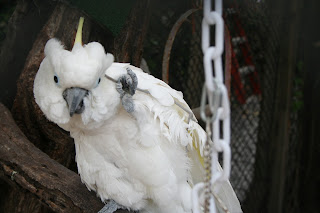Key Largo April 27
I continue to hop, skip and jump up the Keys. That’s what it seems as if I’m doing as I move from one island out over water and back onto another island. Dollops of land surrounded by endless blue-green water. Yesterday the Seven Mile Bridge took me past Little Pigeon Key, a speck of island barely able to hold a small hotel and marina, reachable only by walking on the abandoned original causeway. I figured that’s got to be the smallest Key. Nope. Today Craig Key, a decimal point of land, came in as the smallest. It had virtually no more area than for a house, and one was under construction.
“No, I am not THAT Juan Valdez,” he said “I love Cuban coffee.” The man who claimed no relationship to the 1960s TV commercial character who pushed Colombian coffee is proud of his Cuban heritage. He arrived in Florida in 1968 with his father in a small boat after fleeing his home country. Farm labor was the only work he could get. Then it was a variety of odd jobs, including being a busboy. In his free time he fished and sold his catch. “At some point I realized that I could make a living fishing, so here I am,” he said.
“Here” was under some pine trees along US1 on Upper Matecumbe Key outside of Islamorada. I was drawn off the road by my curiosity about the small mountains of wooden and plastic crates. “Yes, they are lobster traps” Mr. Valdez said pointing to the rectangular wooden ones. “And these plastic ones are for stone crabs. They can’t bite through the plastic.”
My education in lobster and stone crab trapping began: The wooden traps are baited with a piece of cow hide. Florida lobsters are “friendly” creatures, according to Mr. Valdez. Like college kids, when a lobster finds a free food source it sends out signals to its friends, “Party over here.” Pretty soon the trap has lots of lobsters. Should some of the lobsters tire of the party they can’t leave because the wooden slats are spaced so that only lobsters below the legal size limit can escape. The trapped lobsters can remain in the trap for weeks feeding on food that comes through the slats.
Stone crabs aren’t sociable. They will kill each other if they’re in the same trap for any length of time. They also chew through wood fairly easily, ergo, the need for a plastic trap. In goes a piece of pig meat. Down goes the trap. In goes the stone crab which eats the bait. But once the meal is gone the crab will die if it can’t get more food. That means if the fisherman doesn’t pull the trap up within 24 hours his catch will die. To prevent the needless death of stone crabs each plastic trap has one wooden slat. All the crab has to do is chew through that slat and freedom is at hand.
With the lobster and crab season just ended, Mr. Valdez was making repairs to his traps and getting ready for snapper/grouper fishing season which begins in May.
Up the highway near Tavernier I saw what looked like turkey vultures circling. A more little pedaling revealed that they were soaring above the Florida Keys Wild Bird Center’s Sanctuary. The Sanctuary is a series of large aviaries placed along a boardwalk through the hummock. Every bird in the Sanctuary has recovered from major injuries. Though they’re lives were saved, for one reason or another, the birds lack the prowess needed to survive back in the wild. There were hawks, owls, falcons, boobies, plovers, gulls, egrets, terns, cormorants, mocking birds, woodpeckers, catbirds, doves, and Pickles, a white cockatoo, who had picked up a stick to help scratch an itch.
Cocktail conversation starter: Turkey vultures often defecate on their own legs, using the evaporation of the water in their feces and/or urine to cool themselves. This is called “urohydrosis.” Enjoy the party.



No comments:
Post a Comment